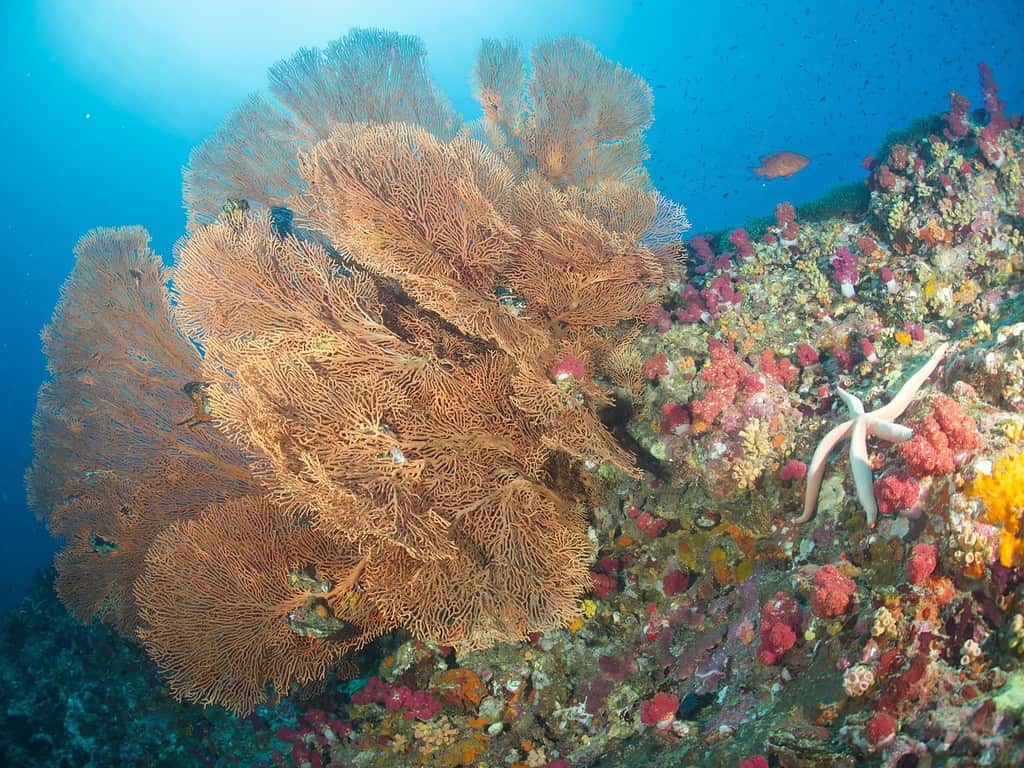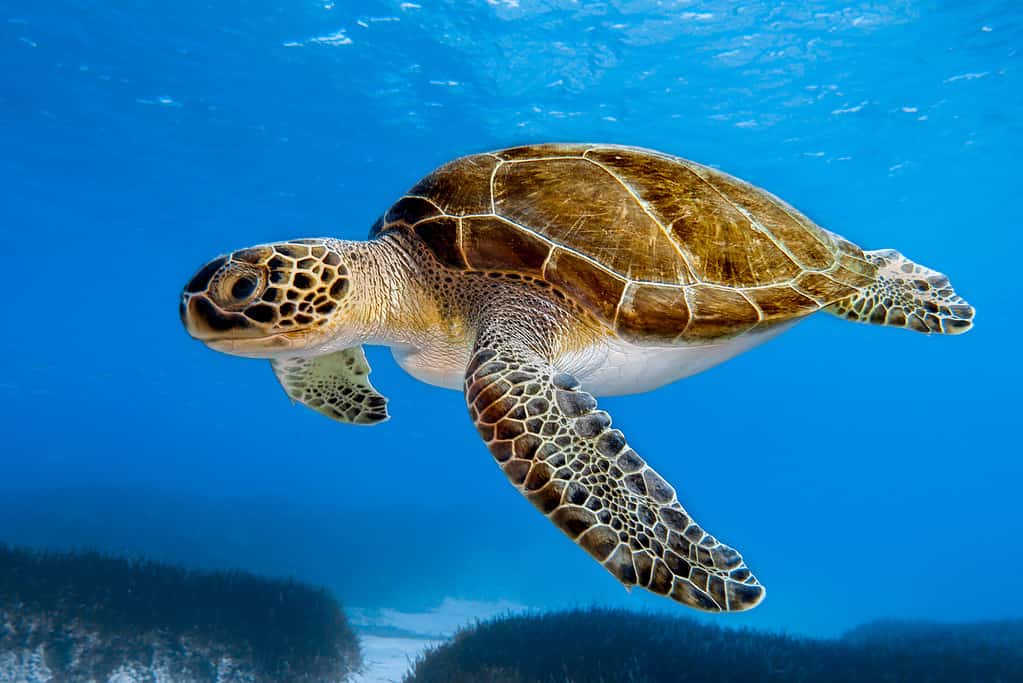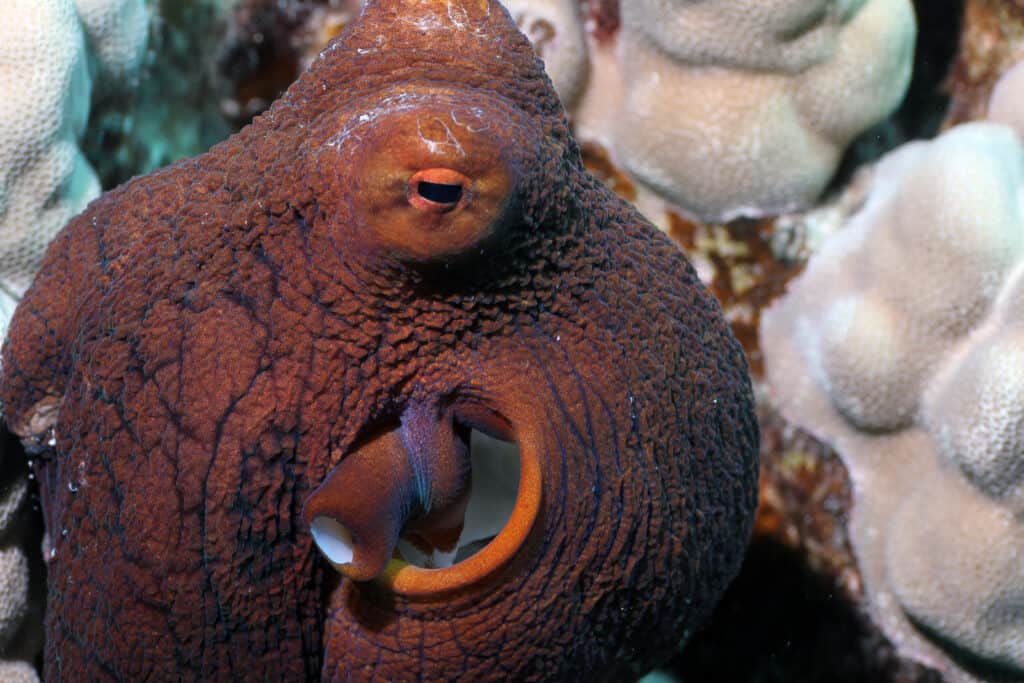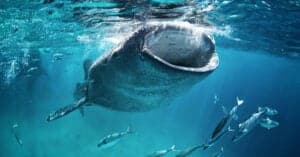The Maui Ocean Center is one of the best aquariums the United States has to offer. With a beautiful setting and an even more tantalizing set of scenery and exhibits within the aquarium, it’s no surprise people want to see all of it without navigating immense crowds. The best times to go are during the “shoulder seasons,” which include the entire months of January and May, and September through the first week of December. The late afternoon hours are also generally the least crowded times. Now that you know the best times to visit, let’s learn about the coolest animals to see at the Maui Ocean Center.
1. Pacific Corals

Corals take a very long time to grow, so preserving them is of utmost importance.
©blueplanet97/Shutterstock.com
Corals appear to be underwater plants, but they are living and breathing animals. The Living Reef exhibit at the Maui Ocean Center is one of the largest in the world displaying live Pacific corals. In this exhibit, there are breathtaking views of more than 40 species of coral, all from different depths of the ocean. You can explore the Shallow Reef exhibit, Mid Reef exhibit, and the Deep Reef Exhibit without having to don scuba gear.
Along with each exhibit representing a different depth, you’ll find accompanying fish species. The addition of fish in their respective environments provides an enriching experience for not only the animals but for the viewers too.
2. Hawaiian Green Sea Turtles

The Hawaiian green
sea turtle
(
Chelonia mydasor Honu) is a native turtle of Hawaii.
©Sakis Lazarides/ via Getty Images
These massive sea turtles can be seen in the Turtle Lagoon of the aquarium. This species of sea turtle can weigh over 300 pounds and be 4 feet long at full maturity. In fact, their size grants them the title of largest hard-shell sea turtle on Earth!
Even though they’re large, sea turtles are typically herbivorous. Their diet of seagrass and algae as adults helps to give them their name, as the fat layer turns green from the chlorophyll. Green sea turtles and other sea turtle species face many dangers and tribulations to their populations. Therefore, they’re a protected species throughout the United States.
3. Sharks

Hammerhead sharks
are not always present in the Maui Ocean Center.
©HakBak/Shutterstock.com
What is an aquarium without sharks? Maui has many sharks swimming in its waters, but you can encounter them risk-free in the aquarium. The Maui Ocean Center has some mainstay sharks, while other species might come and go. Sandbar sharks and blacktip reef sharks are the species you’re most likely to see. Others that might make an appearance are hammerheads, tigers, and whitetip reef sharks. The reason you might not always see the same sharks on multiple trips to the aquarium is that some sharks are released back into the ocean! This can happen because they get too large. Sometimes, the sharks have been rescued from tide pools where they are discarded by fishermen.
Sharks (or Manō) are in two exhibits: the Open Ocean exhibit and the Deep Reef. Truly intrepid visitors can even dive with these sharks, without the hindrance of a cage! You need to be SCUBA certified and book the experience ahead of your visit.
4. Hawaiin Spotted Eagle Ray

Rays live in two locations at the Maui Ocean Center: The Nursery Bay and Open Ocean exhibits.
©iStock.com/eaglerayjoel
Rays are in the same class as sharks: Chondricthyes. This name refers to cartilaginous fish. Sharks and rays are both very elegant and graceful animals, though rays don’t tend to frighten people in the same way as sharks.
Do not miss seeing the spotted eagle ray and Hawaiian broad stingray. The spotted eagle ray (Aetobatus narinari or Hihimanu) can be up to 6 feet wide from end-to-end of its massive wings. As the name suggests, this ray has spots along its dark-colored back. The broad stingray (Dasyatis lata or Lupe) is a species exclusive to Hawaii and Taiwan.
5. Day Octopus

The day octopus is a common species in Hawaiian waters.
©Marty Wakat/Shutterstock.com
The day octopus (Octopus cyanea or Heʻe Mauli) lives in the Living Reef exhibit. However, it might be tough to find. These cephalopods can change their color and skin texture to match their surroundings. This tactic is typically on reservation for threats, but it might flex its camouflaging muscle when it’s startled, too. The day octopus isn’t just a master of disguise; it’s also incredibly intelligent. These octopuses can solve mazes, making them skilled escape artists!
Of course, octopuses are no strangers to adoration in Hawaiian culture. One of the main deities, Kanaloa, is said to take the shape of an octopus as one of his many forms.
Bonus: Interactive Humpback Whale Exhibit
While it is impossible and unethical to house a humpback whale in an aquarium, this giant aquatic mammal is a staple during Hawaiian winters, when they come to the islands to mate. To shine a light on their majestic existence and educate the public, Maui Ocean Center has a humpback whale experience. This show is on display on the largest 3D sphere in the world. This “eye-to-eye” experience, complete with surround sound, connects the audience with these massive creatures.
The photo featured at the top of this post is © iStock.com/damocean
Thank you for reading! Have some feedback for us? Contact the AZ Animals editorial team.






